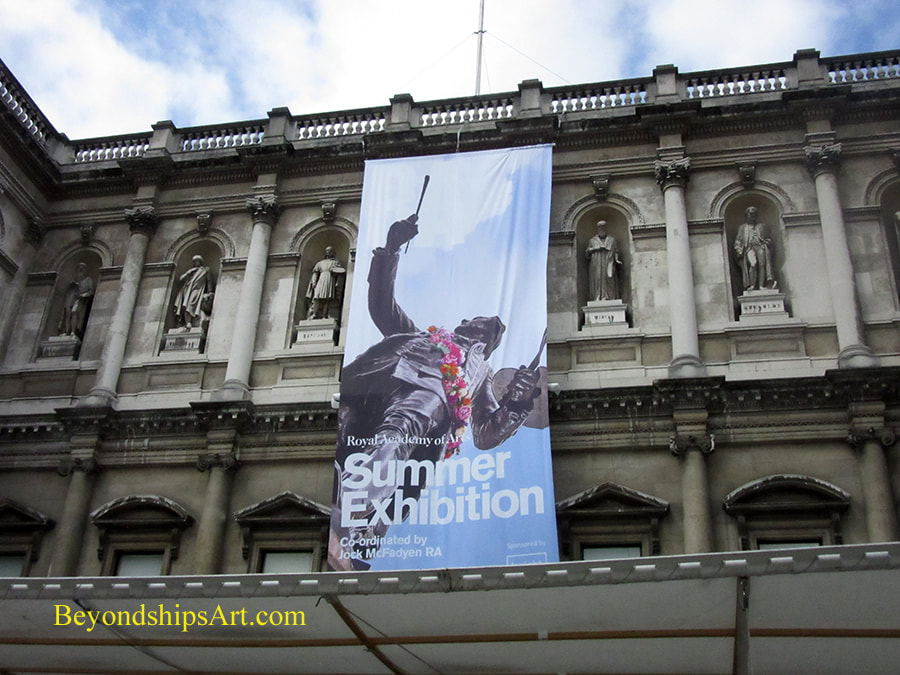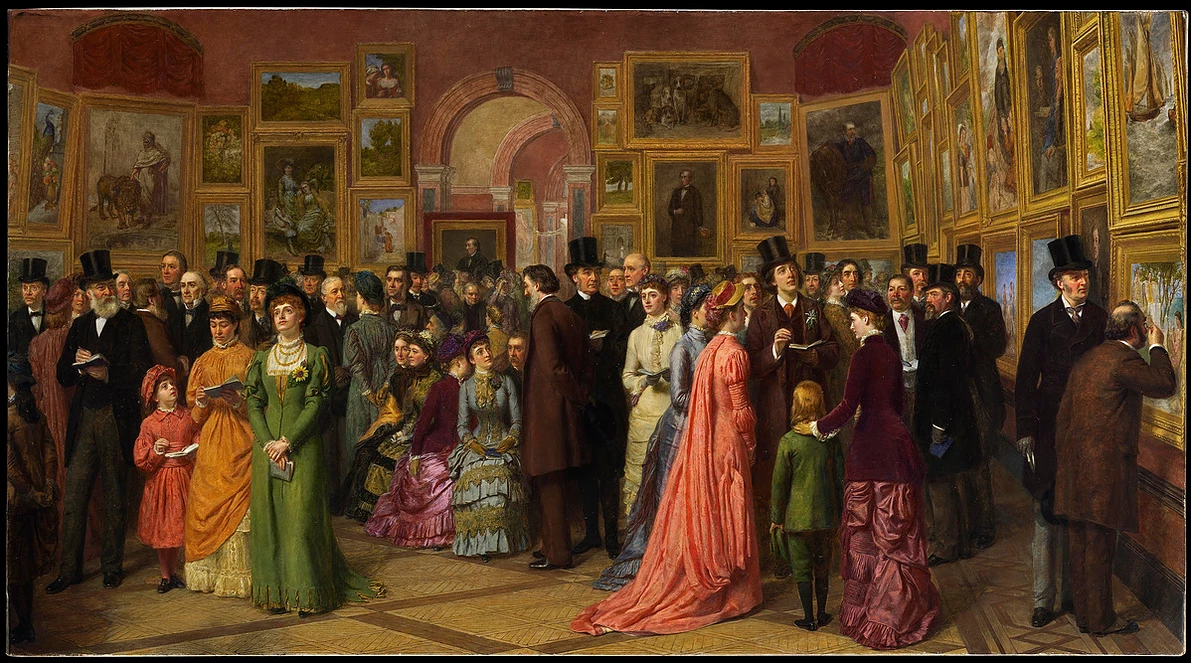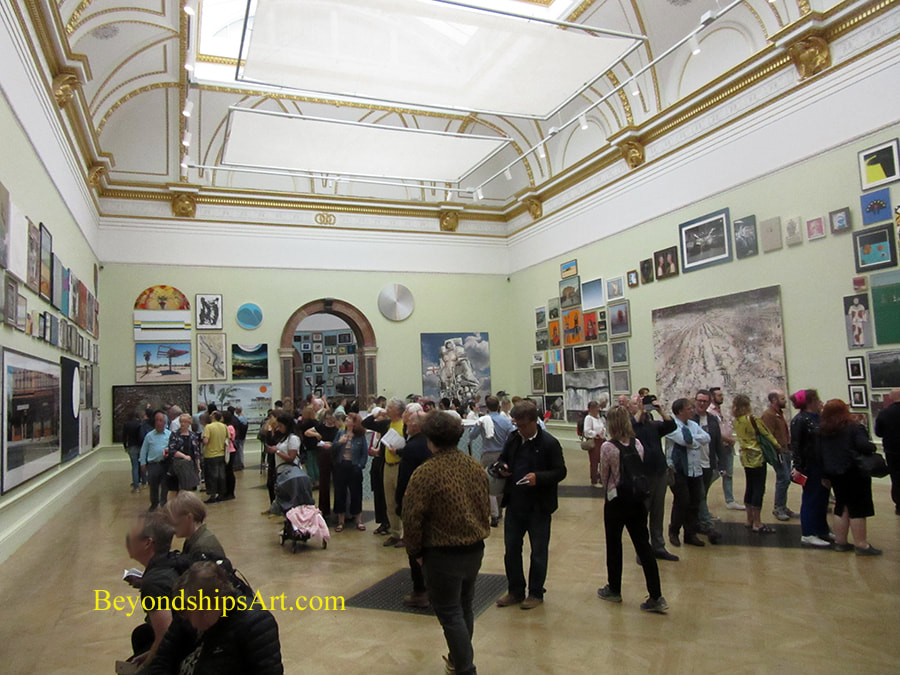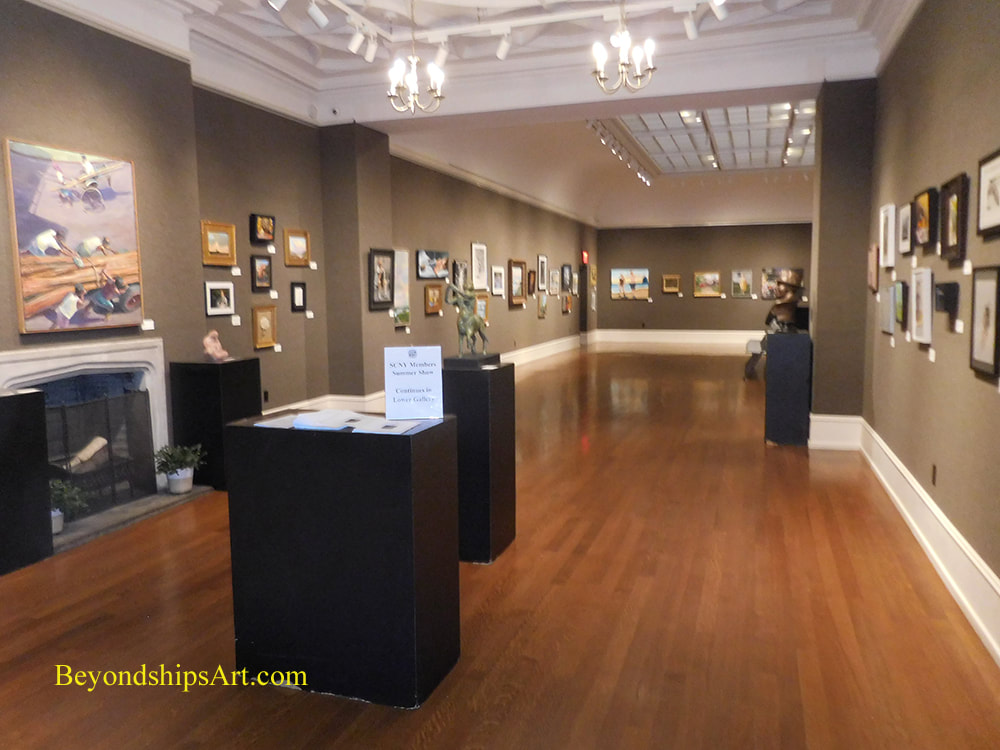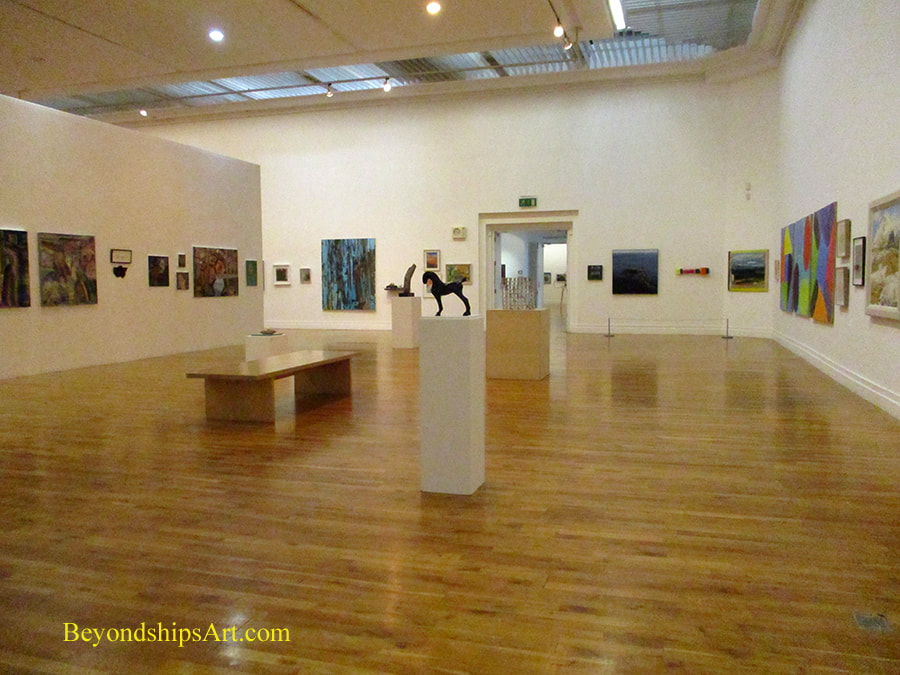Four Summer Exhibitions of Contemporary Art. A hallmark of summer is the summer exhibitions held by a number of museums, galleries and organizations. These exhibitions involve multiple living artists thus and provide an insight into the state of contemporary art. In this review, we look at four such exhibitions.
The grand-daddy of the summer survey exhibitions is the Annual Summer Exhibition at the Royal Academy of Arts in London. It has been held for 179 years without interruption. Art history books are full of legends about this exhibition such as JMW Turner still working on paintings up to the last minute for the summer exhibitions in the early 19th century. William Powell Firth painted a detailed picture of the celebrities of the day including Oscar Wilde and Lily Langtry attending the 1881 Summer Exhibition. The Summer Exhibition is open to all artists and this year, the Royal Academy received over 16,000 submissions. From these some 1,500 were selected. They were displayed in a dozen galleries at the Royal Academy's home, Burlington House, in Central London. Also, outside in the courtyard were a series of monumental sculptures by Thomas Houseago. Determining the works to be displayed is done by the Selection and Hanging Committee. The ten members of this committee are established artists and members of the Royal Academy. This year, they were led by painter Jock McFadyen RA. However, the various members, either individually or in pairs, took responsibility for hanging the selections in the various galleries. Hanging involves more than finding some picture hooks for the paintings. Rather, it involves the placement of the works with regard to other works so as to create dialogues and/or to elaborate on themes. Represented in the exhibition were both established artists and new, upcoming artists. The artists came not only from the United Kingdom but from abroad. The overall theme of the exhibition was the world as it is today and the works covered a diverse array of subjects. We did not get the feeling that the overall exhibition was being used to make political points although some of the works did have a social or political message. There also was great diversity in the media used by the artists including not just paintings but also film, photography, sculpture, architectural works, installations and mixed media. Nor did any one style dominate. Many of the works were representational but there were also abstract works and works of fantasy. The works are displayed as they have been for at least a century - - lining the walls of the galleries, practically from floor to ceiling. Since the galleries are quite tall, this makes it hard to see some of the works. As it was in Oscar Wilde's day, the Summer Exhibition is something of a social event. Indeed, there is even a wine bar in one of the galleries. However, the exhibition is not just attended by celebrities. On the day that we attended, the galleries were crowded with members of the British public as well as the occasional tourist. It was encouraging to see so much interest in art. In Dublin, Ireland, the Royal Hibernian Academy (“RHA”) was holding its 189th Annual Exhibition. Ireland's largest and longest running exhibition of visual art and is seen by about 50,000 visitors each year. The Annual Exhibition is open to Irish artists, artists from elsewhere in the European Union and artists outside the EU. Each year about 2,600 submissions are received from which approximately 12 percent are selected for exhibition. Selections are made by a Selection Committee made up of six members of the RHA and chaired by the president of the RHA. Decisions are made by majority vote without the committee knowing the identity of the artists. The sole criterion is the artist merit of the work. Held in the RHA's building in the heart of Dublin, the Annual Exhibition spans several large galleries. The works were placed on the walls in horizontal lines at eye-level, which makes it much easier to study and appreciate the works than the method used at the Royal Academy. The works in this year's exhibition included a variety of media including painting, sculpture, drawing, and photography. There were also a variety of styles but it appeared to us that a majority of the works were variations on representational art. We were impressed by the overall vitality of the assembled works as well as by their diversity. Contemporary art is alive and well. On the other side of the Atlantic, the Salmagundi Club was holding its Annual Summer Members Exhibition. The Salamundi Club was founded in 1871 by a group of artists in New York City and has remained a prestigious association dedicated to art ever since. The SCNY Summer Exhibition is a non-juried exhibition open to its artist members. Inasmuch as there is a rigorous process to become an artist member, this exhibition is a serious exhibition. It thus provides a view of the kind of work being produced by a respected segment of the art world. The Salmagundi Club is a smaller institution than those presenting the other exhibitions discussed in this review. Accordingly, the exhibition did not present as many works. The works were more traditional in size - - a more human size than the monumental works often seen in exhibitions of contemporary art. While there is a place for monumental works, the art establishment's current belief that a painting must be big to be good is belied by these works. As with the Royal Academy's and the RHA's exhibitions, the works at the Salmagundi Club were diverse in style and media. However, the majority of the works were representational paintings, mostly in oils. There was no overt theme or socio-political message to the exhibition. The subjects explored were more everyday - - interpretations of people and places - - and as a result, timeless. That is the reason artists have returned to these subjects over and over again for centuries. It is also why today's viewers can still be moved by a face or a scene painted centuries ago. Meanwhile, on the other side of Manhattan, the Whitney Museum of American Art was holding its 2019 Biennial. The Whitney began holding annual survey exhibitions of contemporary art in 1932 but in the 1970s, it shifted to holding these exhibitions every two years. In contrast to the previously mentioned exhibitions, the works on view are not for sale through the exhibition. Rather, according to the Whitney, the “2019 Biennial takes the pulse of the contemporary artistic moment.” Unlike the exhibitions discussed earlier, this exhibition was not drawn from works submitted by artists. Instead, two of the Whiteny's curators explored the contemporary art scene and then invited 75 artists and collectives to participate in the exhibition. Consequently, the exhibition represented those curators' view of contemporary art. The art selected by the curators was heavy on attempting to convey social and political messages. According to the Whitney, “key issues and approaches emerge from the exhibition: the mining of history as a means to reimagine the present or future; a profound consideration of race, gender and equity; and explorations of the vulnerability of the body. Concerns for community appear in the content and social engagement of the work and also in the ways that the artists navigate the world.” In other words, “the works on view interact in profound ways and taken together, go a long way toward reframing the past, complicating the present, and reimaging the future.” Some of the messages presented in the works were straight forward and provoked thought. Some were more obscure and thus less successful, depending on the signage for support in conveying their messages. The works included paintings, sculptures, installations, film and video, photographs and performance art. Most of the works were non-traditional, avant garde pieces. There was essentially no representational art. While these works deserve to be seen, the Royal Academy, the RHA and Salmagundi exhibitions demonstrate that there is much more going on in contemporary art than this exhibition presented. Therefore, we have to quarrel with the Whitney's assertion that this exhibition is a “snapshot of art in the United States.” Considering that there were vast stretches of empty space in some of the galleries, the exhibition could have been broader and more inclusive. |
Above: William Powell Firth's "Private View" of a 19th century Summer Exhibition at the Royal Academy.
Below: People attending the 2019 Summer Exhibition at the Royal Academy. Above: The Annual Members Summer Exhibition at the Salmagundi Club.
Below: A gallery at the Royal Hibernian Academy's 189th Annual Exhibition. |
Art review - Royal Academy of Arts, Salmagundi Club, Whitney Museum - - Three Summer Exhibitions
